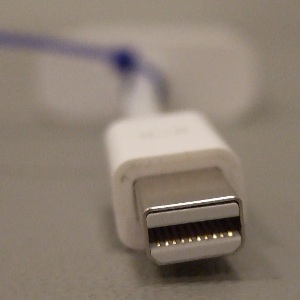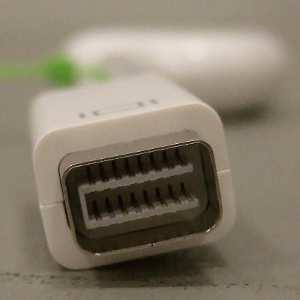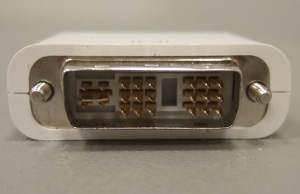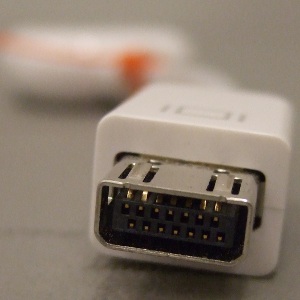-
Apple VGA Adapter Cheatsheet
Posted on March 22nd, 2009 4 commentsMany years ago, Apple gave up on the standard VGA port and decided that all of their laptops should have very small proprietary video ports. This is an issue for anyone who would like to actually use that port to do something, like connect an external monitor or a video projector. To make matters worse, Apple changes the video port every two or three years and never puts any kind of identifying marks (other than a generic video symbol) on either the port or the plain white video adapters. Then, just to keep you on your toes, they only provide small, bird’s eye view photos of the adapters on the Apple Store, making it rather difficult to purchase the correct one.
If you have an Apple laptop and need to give presentations, then the solution here is simple: Just purchase the adapter, put it in your laptop case, and never lose it or accidentally leave it at home. Easy, right? Of course, if you are supporting a large number of presenters at a conference (for example, SXSW Interactive), then you need to be able to assist all of the presenters who show up without their video adapters. That means you should probably have a pair of each kind of video adapter, labeled, on you at all times. Here are all of the Apple VGA adapters, listed in reverse chronological order:
Mini Display Port to VGA (MacBook Pro, current gen MacBook, 2nd gen MacBook Air) – This is the ‘new standard video port’ that Apple is using across their entire line of laptops. Since these are the most recent Apple laptops, this will be the most commonly requested adapter going forward.

Micro DVI to VGA (1st gen MacBook Air) – Used only for one model for one year, you will probably not get too many requests for this one.

Mini DVI to VGA (Intel Core Duo iMac, MacBook, 12-inch PowerBook G4) – This one was in use for a while, and there are still a substantial number of these laptops floating around, so don’t be surprised when someone asks for one of these.

DVI to VGA (PowerBook G4, various PC laptops) – Apple hasn’t used this one in several years, but many PC laptops have a standard DVI port that will need to be converted to VGA in order to connect to a projector. This is a good one to have on hand. Note: Because both ends of this adapter are standards-based ports, you can find them for half the price over at newegg.com

Mini VGA to VGA (12-inch PowerBook G4, iBook) – This is the oldest of the adapters. I haven’t had any requests for this one in a while, but that doesn’t mean I don’t have one just in case someone needs it.

I would be remiss if I didn’t point out that the very first generation of iBooks did not have a video port at all. There were some very sad presenters that year. I have seen some USB-to-VGA adapters on the market, but I do not have proof that any of them work with the first gen iBook. There’s not much we can do for these folks other than have a USB flash drive handy to transfer their presentation to another laptop.
Uncategorized -
Five Nines
Posted on January 10th, 2009 No commentsFor many IT folks, the holy grail of high availability is “five nines”. This means that over a particular period of time (usually one year), they will be able to achieve 99.999% availability for a particular service (such as email).
Availability % Downtime per year Downtime per month Downtime per week 90% 36.5 days 72 hours 16.8 hours 95% 18.25 days 36 hours 8.4 hours 98% 7.30 days 14.4 hours 3.36 hours 99% 3.65 days 7.20 hours 1.68 hours 99.5% 1.83 days 3.60 hours 50.4 minutes 99.8% 17.52 hours 86.23 minutes 20.16 minutes 99.9% 8.76 hours 43.2 minutes 10.1 minutes 99.95% 4.38 hours 21.56 minutes 5.04 minutes 99.99% 52.6 minutes 4.32 minutes 1.01 minutes 99.999% 5.26 minutes 25.9 seconds 6.05 seconds 99.9999% 31.5 seconds 2.59 seconds 0.605 seconds The problem is that each additional nine costs quite a bit more money than the previous one, and at some point the person signing the checks is going to put away their pen. So, the trick lies in first determining what range of availability is desired, then assigning a dollar value to each level of availability, and then finding a balancing point between availability requirements and your budget.
Uncategorized


